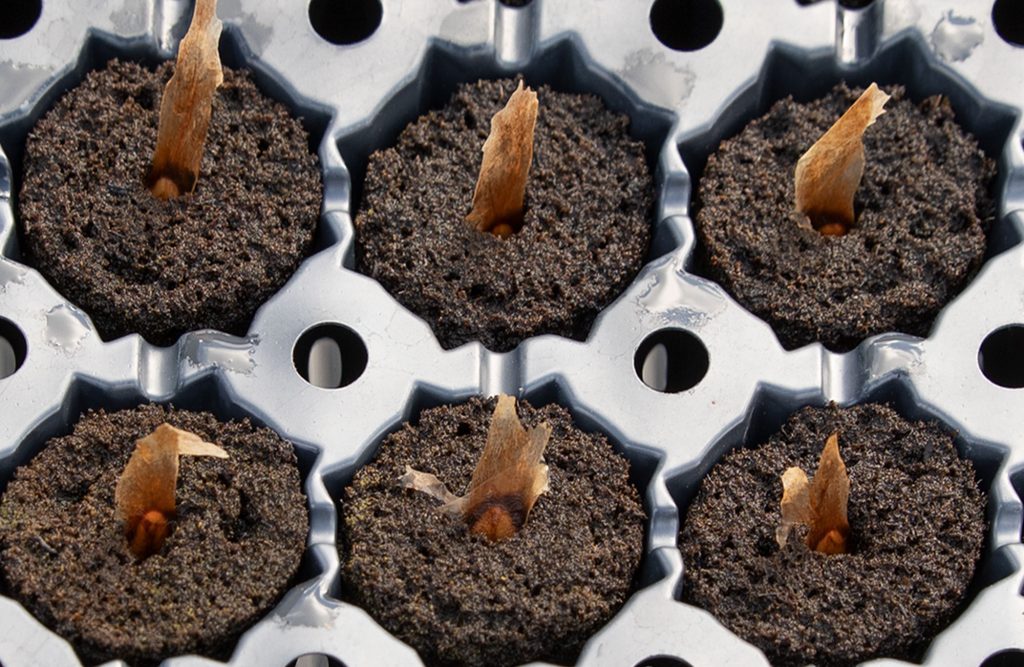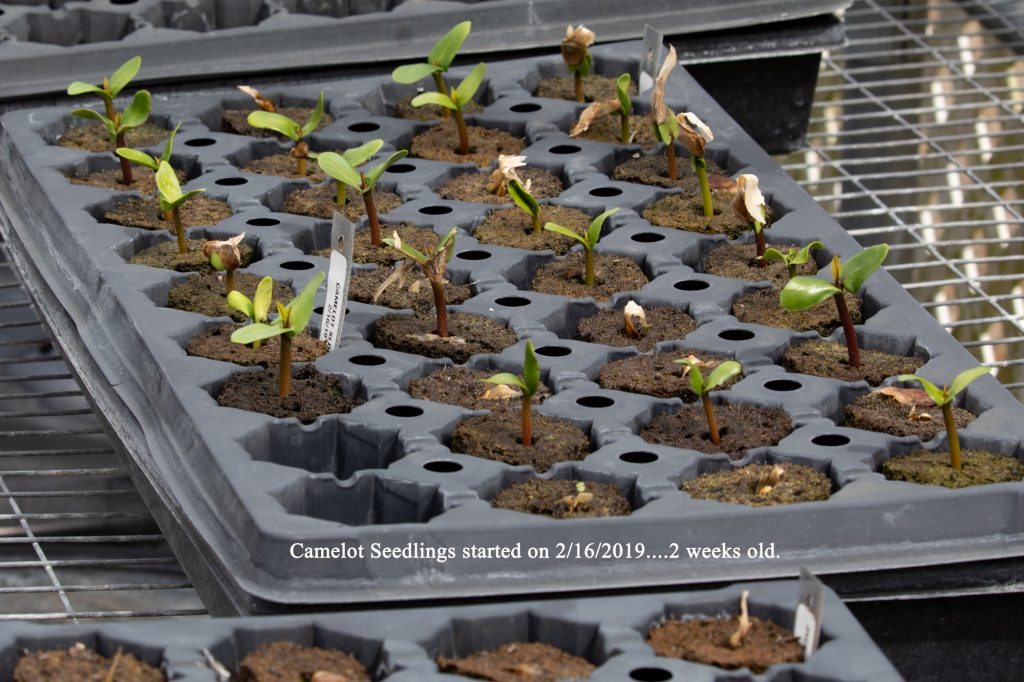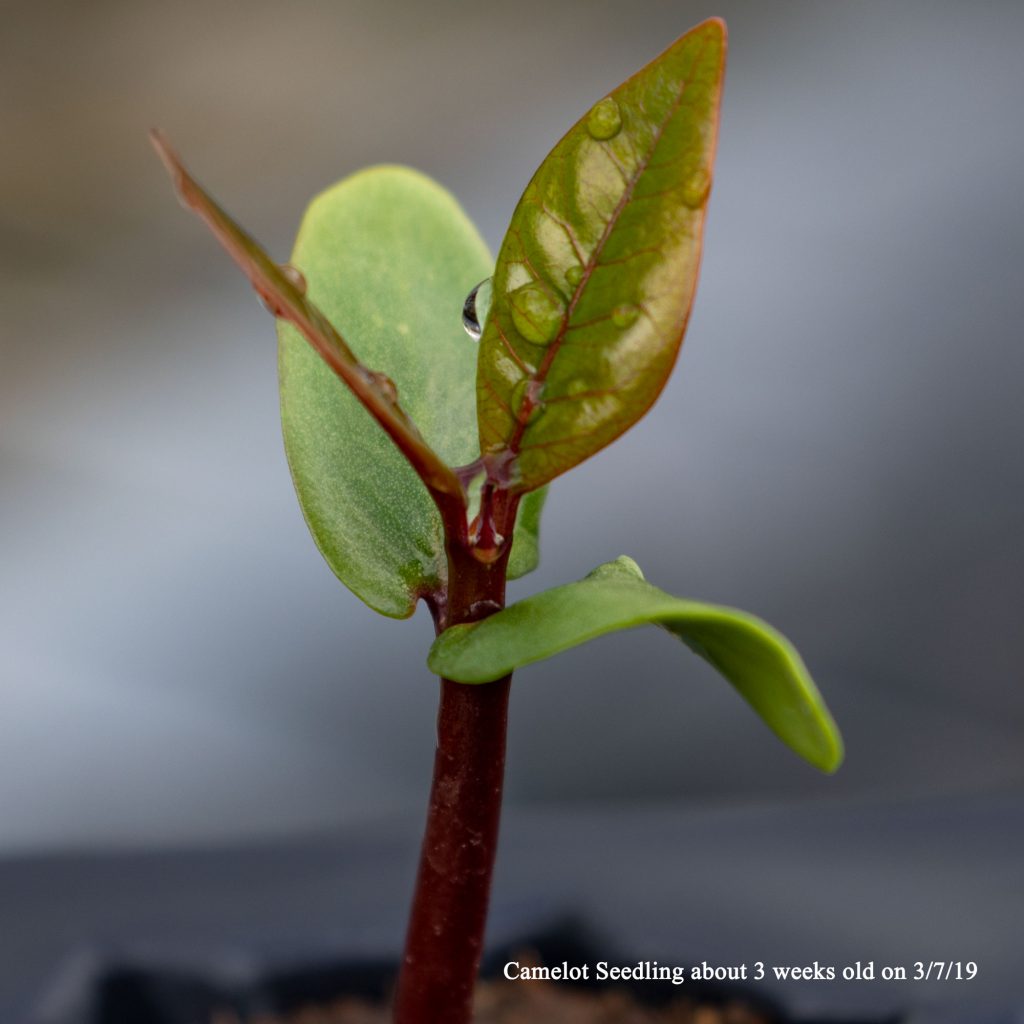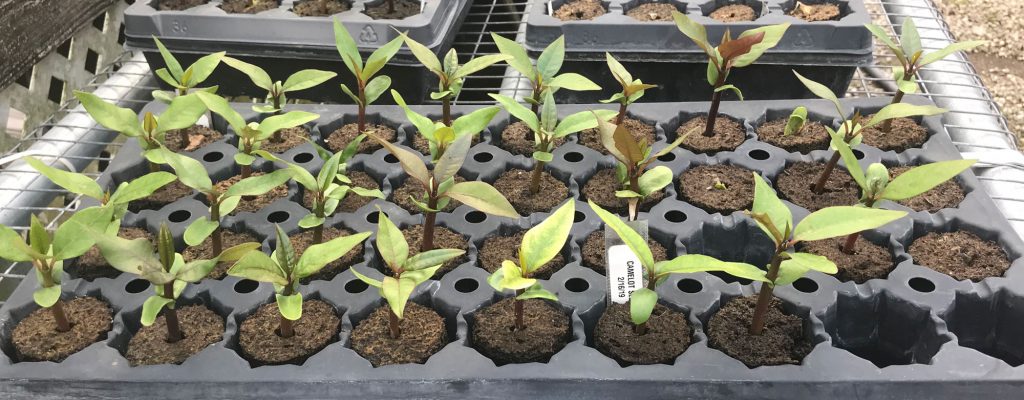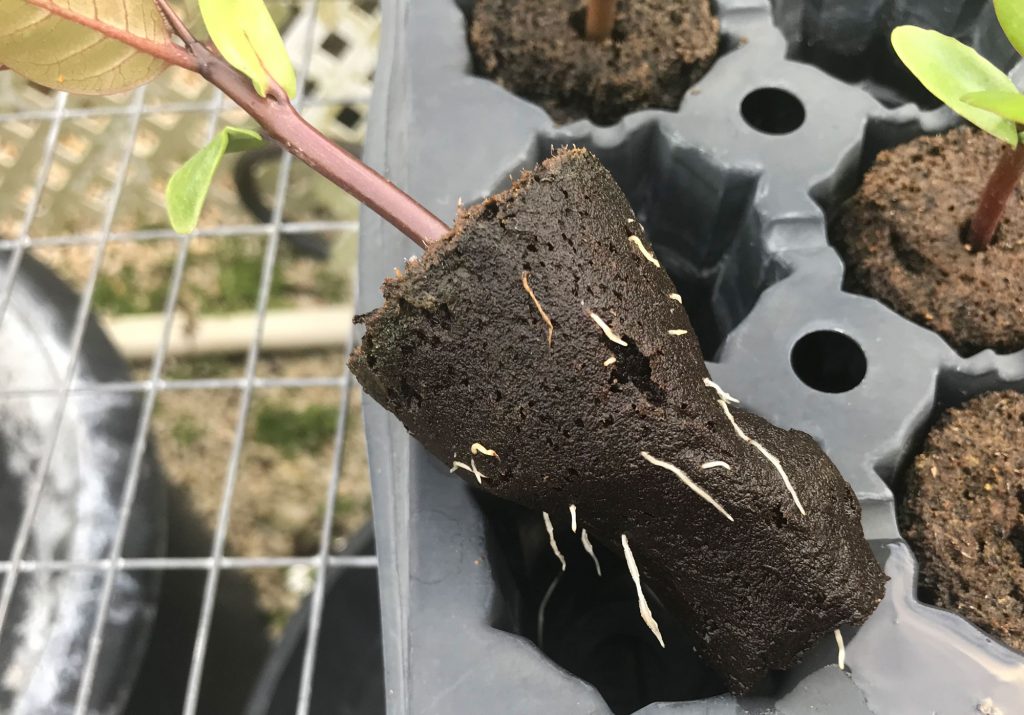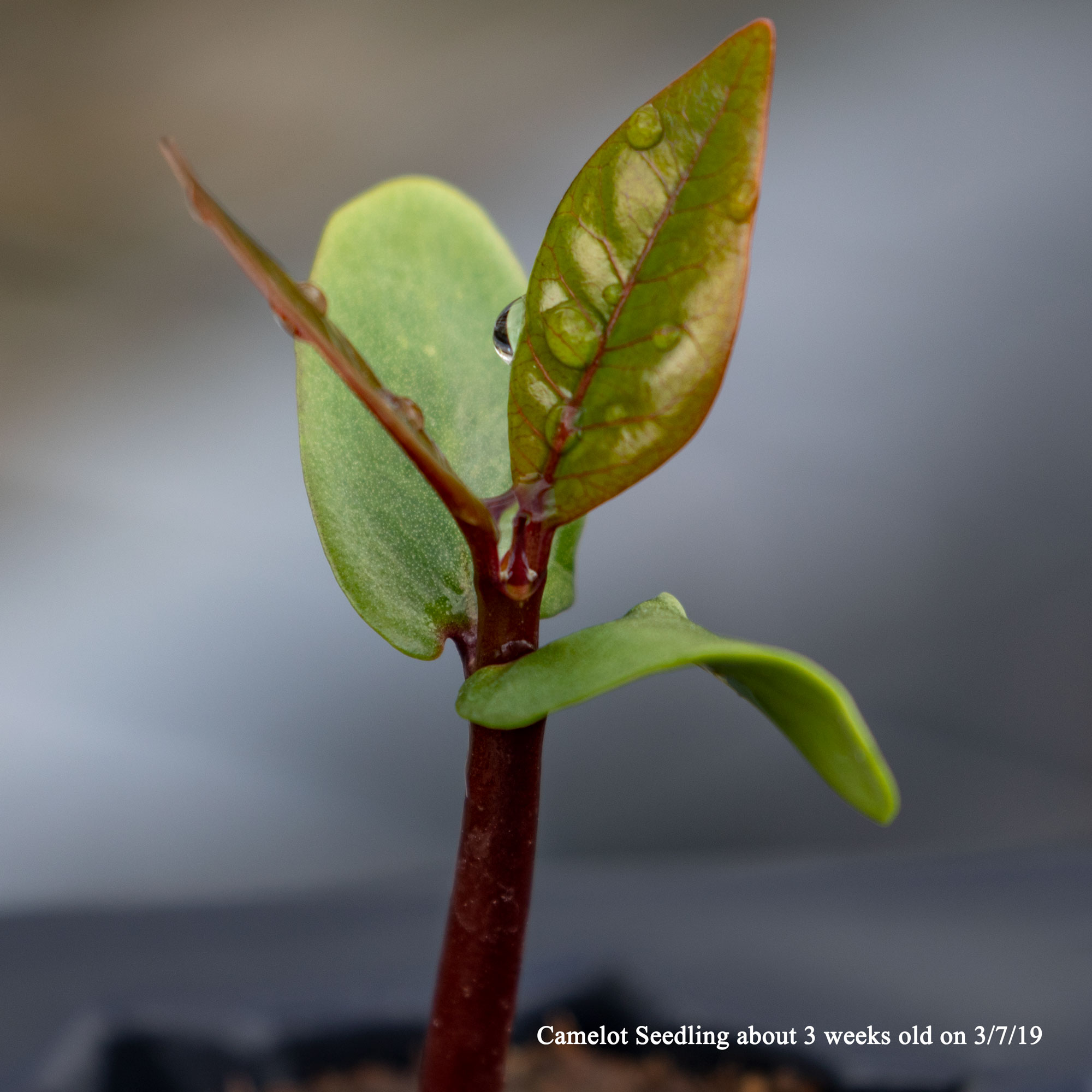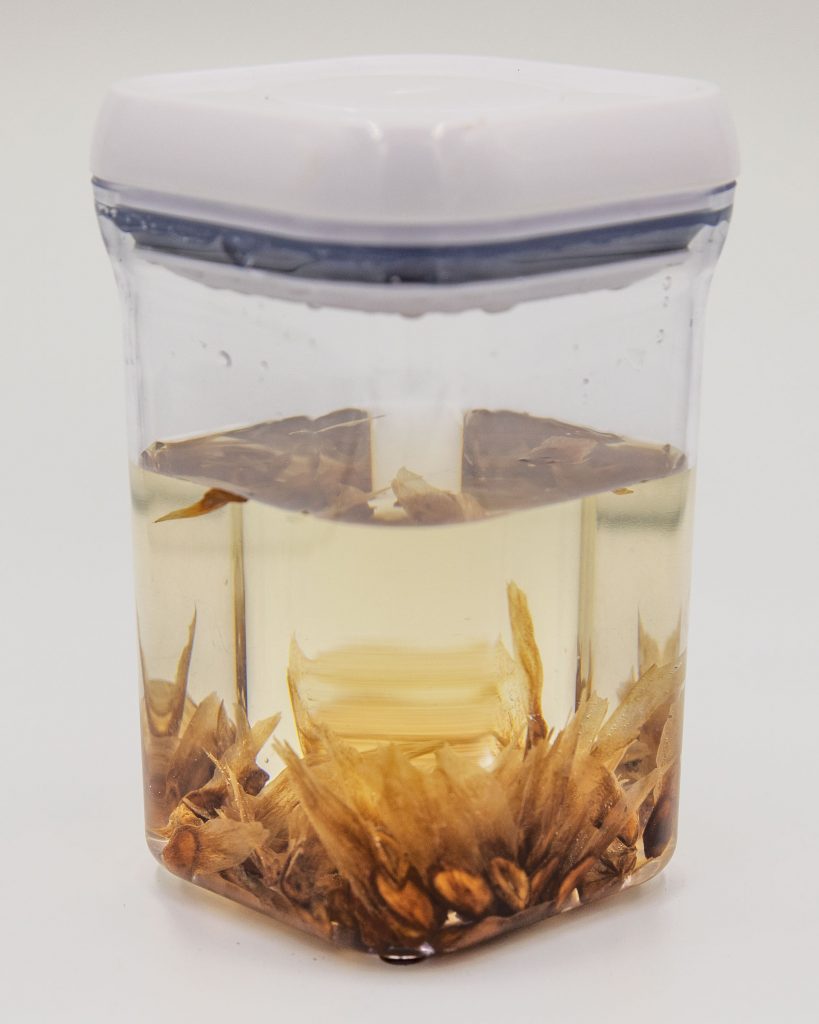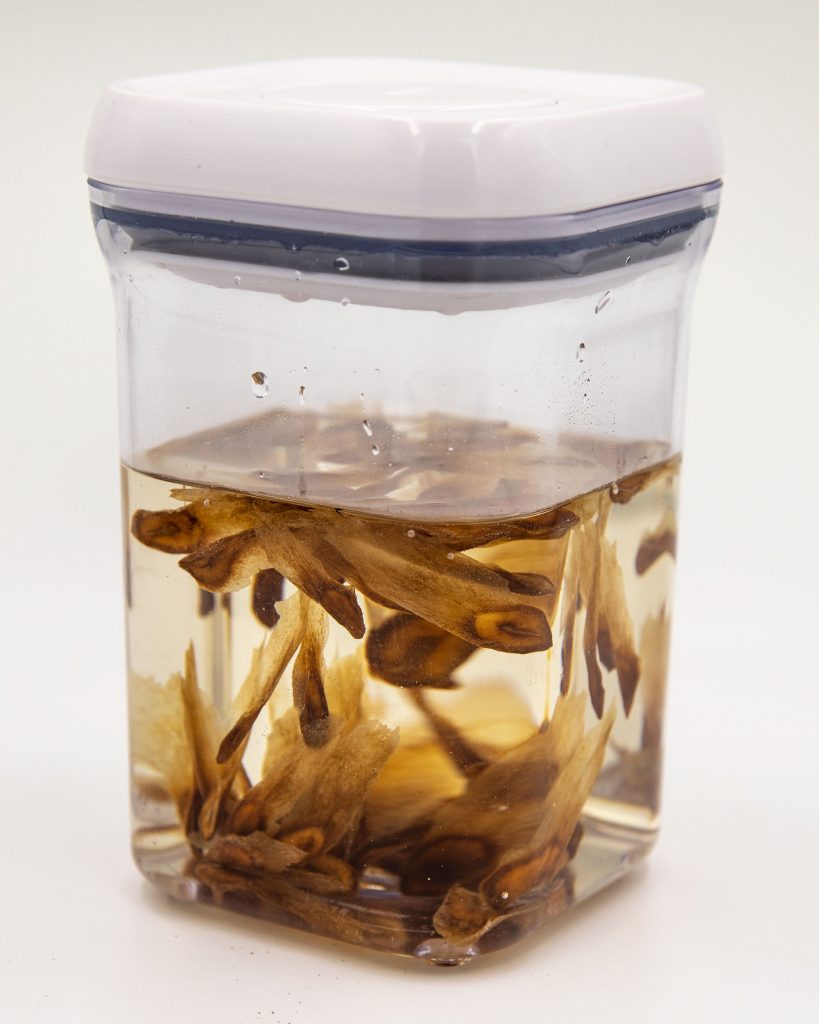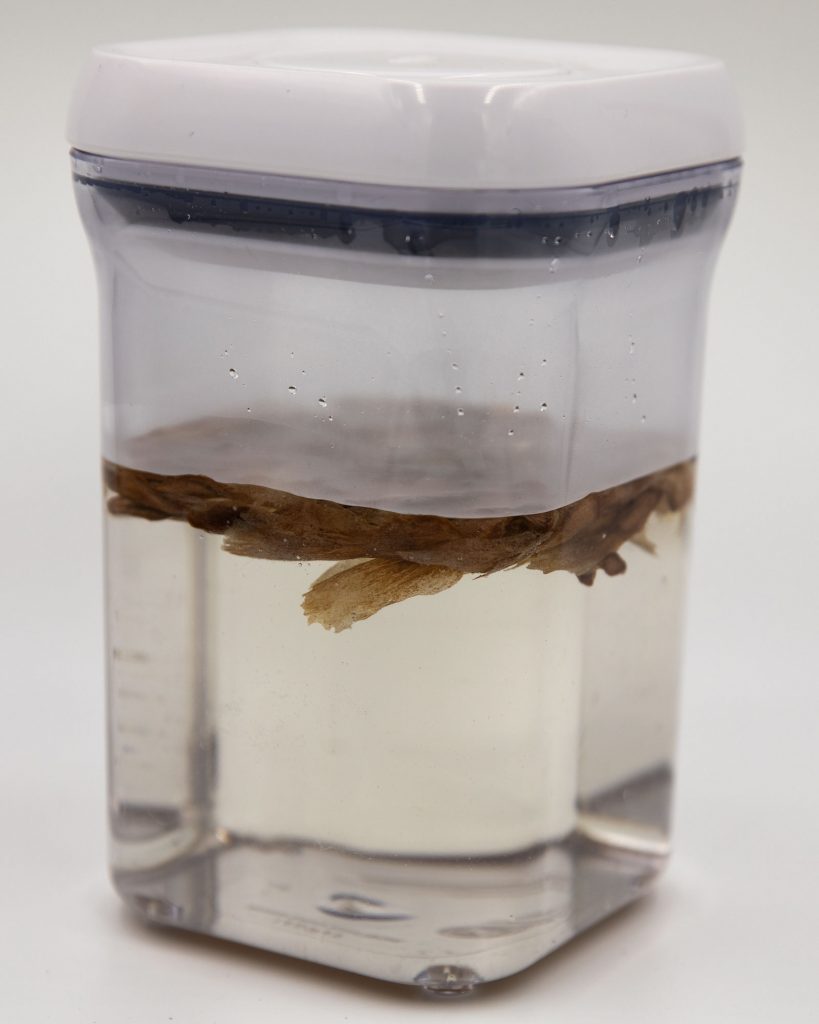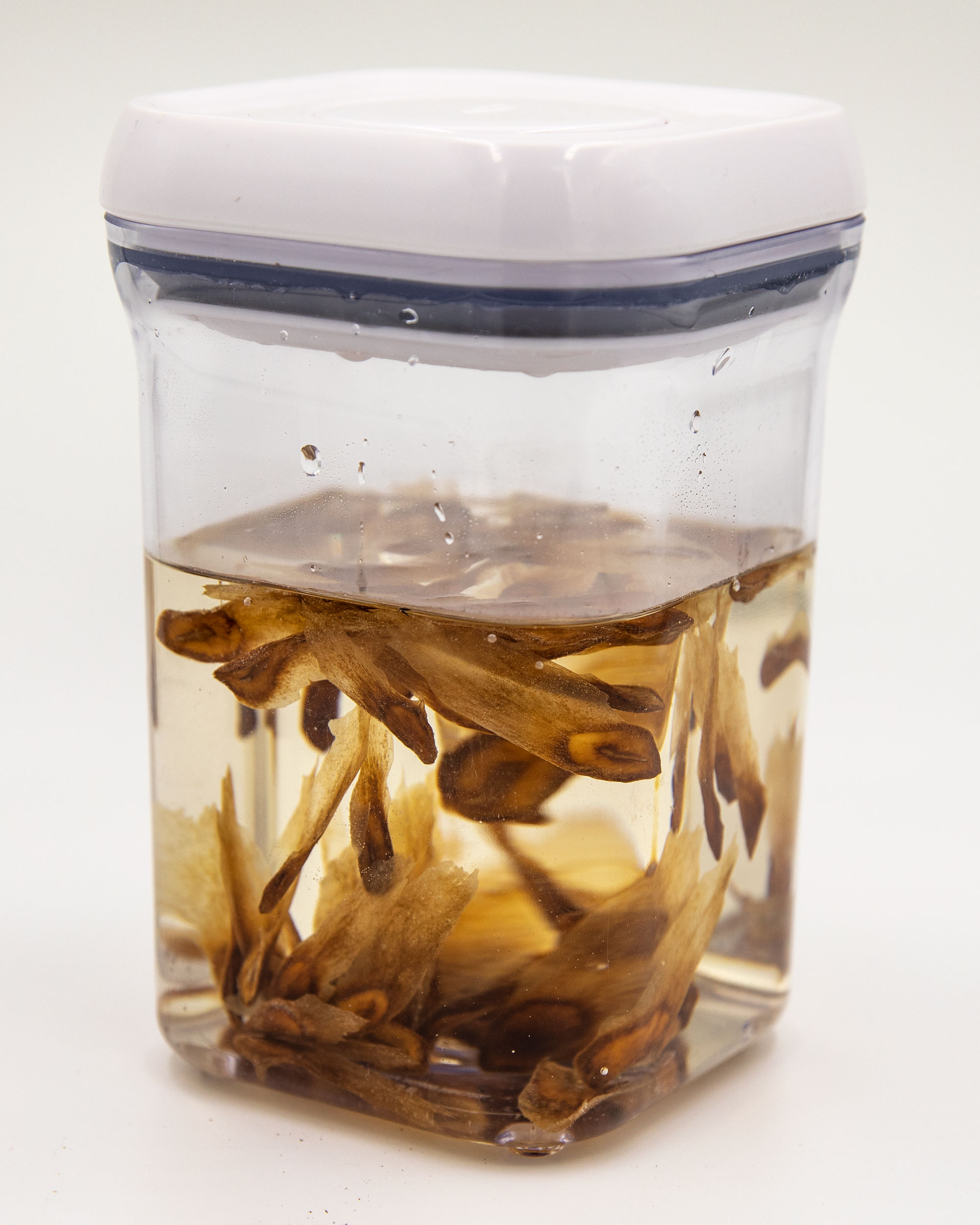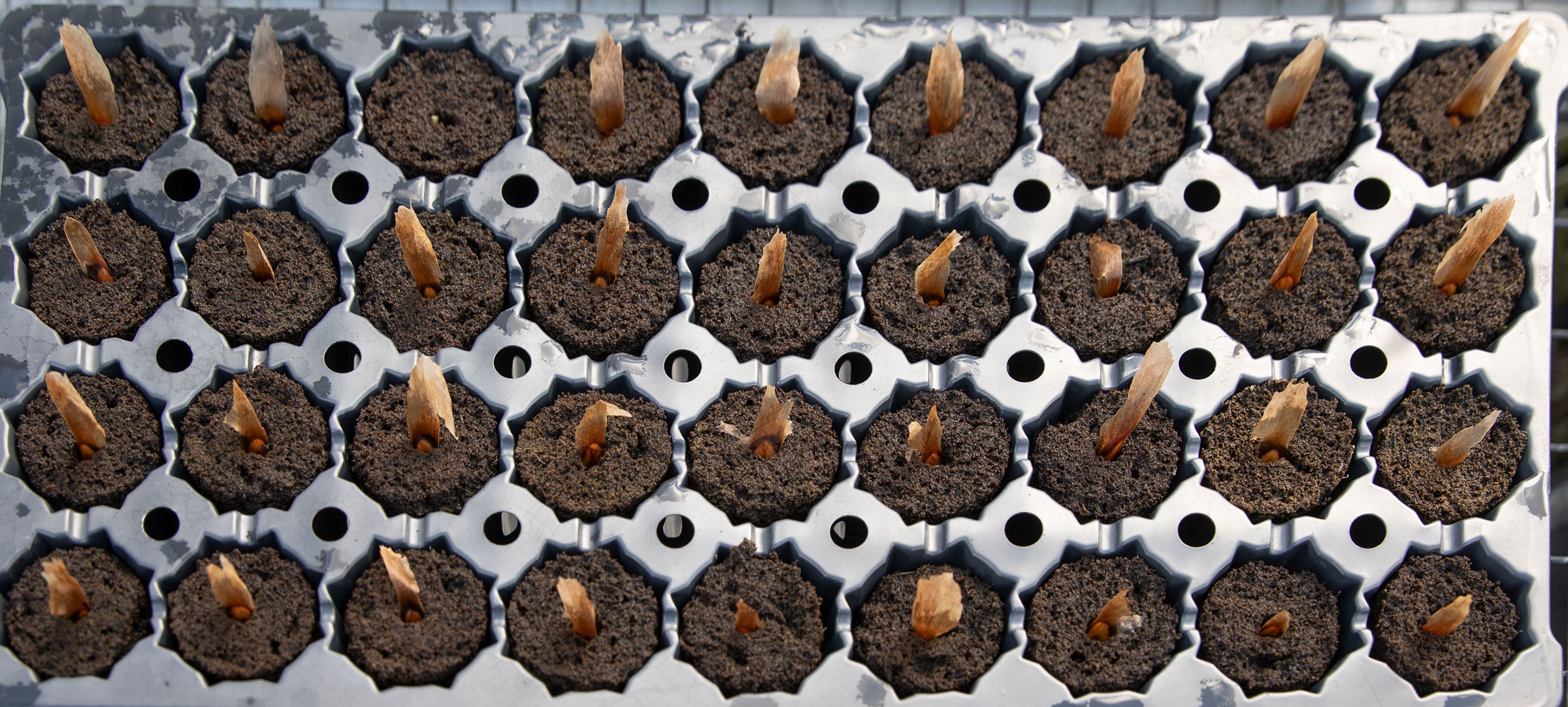As always, we are pleased to share our experiences and technology!
I’m using the Plumeria Seed Starter Kit from FCN
After several years of experimenting with various media and products for germinating and growing seedlings, We, Florida Colors Nursery, decided to make them available on our site. The Florida Colors Nursery Plumeria Seed Starter Kit consists of a flat tray without drain holes, a plug tray and 36, pH neutral 2″ x 3″ foam injected peat plugs pre-saturated with micro-nutrients (Why I use FCN FlexiPlugs). Specific micro-nutrients have been added to promote seed germination and give young seedlings a kick start. The Plumeria Seed Germination Kit is for the serious grower who wants the most out of their seeds.
For best results always start with the freshest seeds possible. Purchase from a trusted seller known to provide quality plumeria seeds.
Nutrient Mix – 1 oz of Carl Pool’s Root Activator (Why I use Carl Pool’s Root Activator) and 1 oz Vital Earth’s Vitazyme (Why I use Vitazyme) per gal of water. The products used for the nutrient mix are products we have been using and also sell on our website, but you can certainly replace them with similar products.
Phase I – Seed Germination
If you need to test viability or speed up initial germination, you may want to soak your seeds before planting. See “How to Soak Plumeria Seeds”
https://plumeriaseeds.com/soaking-plumeria-seeds/
There are many methods for seed germination. The method below is the best for me in my climate.
- Remove the plastic cover. (The tray and plugs are wrapped in plastic and sealed to keep the plugs moist.)
- Use a knife to make a slice in each plug, make a 1/2″ wide slice and about 2″ down into the plug.
- Place the seed in the slice in the plug allowing the seed’s flag to stick out.
- Fill the flat tray with the nutrient mix (1 oz of Root Activator and 1 oz Vitazyme per gal of water) The best way to accomplish this is to lift a plug out, add nutrients and replace the plug.
- Seed germination will take from 7-14 days, sometimes longer.
Phase II – Seedling Growth
Phase II is the initial seedling growth
- Check the flat tray every few days and add water when needed to keep the tray full. The easiest way is to lift a plug out, check and add nutrients if needed, then replace the plug.
- After your seedling has produced three or four real leaves, start fertilizing with Bioblast 7-7-7 (Why I use Bioblast) every two weeks (Mix: 1 teaspoon per gallon, this is half strength), early in the morning or late in the afternoon. Do not spray during the heat of the day.
- Check the water level in the trays often and add water as needed to keep the flat tray full of water.
- Check and add nutrients as needed, the same mix as above or similar.
- Every two weeks foliar feed with Bioblast 7-7-7 fertilize (1 teaspoon per gallon, half strength), early in the morning or late in the afternoon. Do not spray during the heat of the day.
- When you see substantial growth and lots of roots, it is time to transplant into soil.
- Initial seedling growth is usually 2-3 months before it has enough root to transplant into 1 gal or larger pots.
NOTE: Your seedlings growth will vary depending on the weather and time of year. Spring is the best time for planting and growing plumeria seeds. Seeds need warmth and moisture to germinate; seedlings need warmth, moisture, and light to grow.
Phase III – Transplanting to Soil and Fertilizing
When you have sufficient roots, it’s time to transplant the plugs into 1 gal or larger pots. I prefer to use Pro-Mix BX with Mycorrhizae (Why I use Pro-Mix BX) for the first transplanting of seedlings in soil. Usually good for eight months before time to move to larger pots.
- Fill a one gal pot or larger with Pro-Mix BX with Mycorrhizae.
- Drench the Pro-Mix with the same mix as above, (1 oz of Root Activator and 1 oz Vitazyme per gal of water)
- Make a hole large enough for the plug to fit in, (we use a rooting tube to make an indention into the soil).
- Insert the plug in the soil (Be careful not to damage the roots).
- Sprinkle two tablespoons of Excalibur VI (Why I use Excalibur Plumeria Fertilizer) around the plug and the top of the soil. Excalibur should last until the seedlings are approximately eight months old. I like to use the six months because the seedling should need to be transplanted every 6 months or so.
- Add soil to cover the fertilizer and the plug with about 1/2″ to 1″ of soil.
- Tamp the soil around the plug to assure good contact between the plug and the soil.
- Water the first time after transplanting, until the soil is soaked with the Nutrient mix (1 oz of Root Activator and 1 oz Vitazyme per gal of water).
- Add soil when needed.
- Be sure to monitor soil moisture and water well when the soil is almost dry. (A moisture meter is a good tool to use)
- Every two weeks Foliage feed with Bioblast 7-7-7 fertilize (1 tablespoon per gallon, full strength), early in the morning or late in the afternoon. Do not spray during the heat of the day.
- Treat for insects as needed.
Now that you have labored so hard to give your seeds the best possible care to help your seeds germinate and grow all you have to do is wait. I can assure you the feeling you get when you a plumeria seedling bloom that you grew from seed is worth it. Hopefully, you will find out how it feels for yourself in a few years.

